The Caribbean is often seen as an exclusive playground for the rich, filled with luxury resorts and pricey villas, making it seem like paradise comes with a hefty price tag. While that’s the image the tourism industry pushes, there’s a different, more affordable side to the Caribbean that many don’t know about.
In fact, it’s totally possible to live on a sunny Caribbean island for under $2,000 a month, and more and more digital nomads, retirees, and expats are making it their reality. The trick? It’s all about living like a local, not a tourist.
This guide takes a closer look at 12 beautiful Caribbean spots where a single person can comfortably live for less than $2,000 a month. We’ve based our research on a simple idea: live like the locals.
If you’re willing to choose the local side, buying fresh produce, eating where the locals eat, and getting into the island’s rhythms, you can live comfortably on a budget.
| Disclaimer: The cost of living information provided in this blog is compiled from reputable sources such as International Living, Global Citizen Solutions, and Wise, along with official government websites for visa and travel details. While every effort has been made to ensure accuracy, costs and regulations can change over time. We encourage readers to verify current information before making any relocation or travel decisions. |
Contents
- 1 The 12 Affordable Caribbean Paradises
- 1.1 1. Castries, St. Lucia
- 1.2 2. Puerto Viejo, Costa Rica
- 1.3 3. Havana, Cuba
- 1.4 4. Caye Caulker, Belize
- 1.5 5. Port of Spain, Trinidad
- 1.6 6. Negril, Jamaica
- 1.7 7. St. George’s, Grenada
- 1.8 8. Isla Mujeres, Mexico
- 1.9 9. St. John’s, Antigua and Barbuda
- 1.10 10. Punta Cana, Dominican Republic
- 1.11 11. Willemstad, Curaçao
- 1.12 12. Bocas del Toro, Panamá
- 2 Finding Your Affordable Caribbean Paradise
The 12 Affordable Caribbean Paradises
1. Castries, St. Lucia
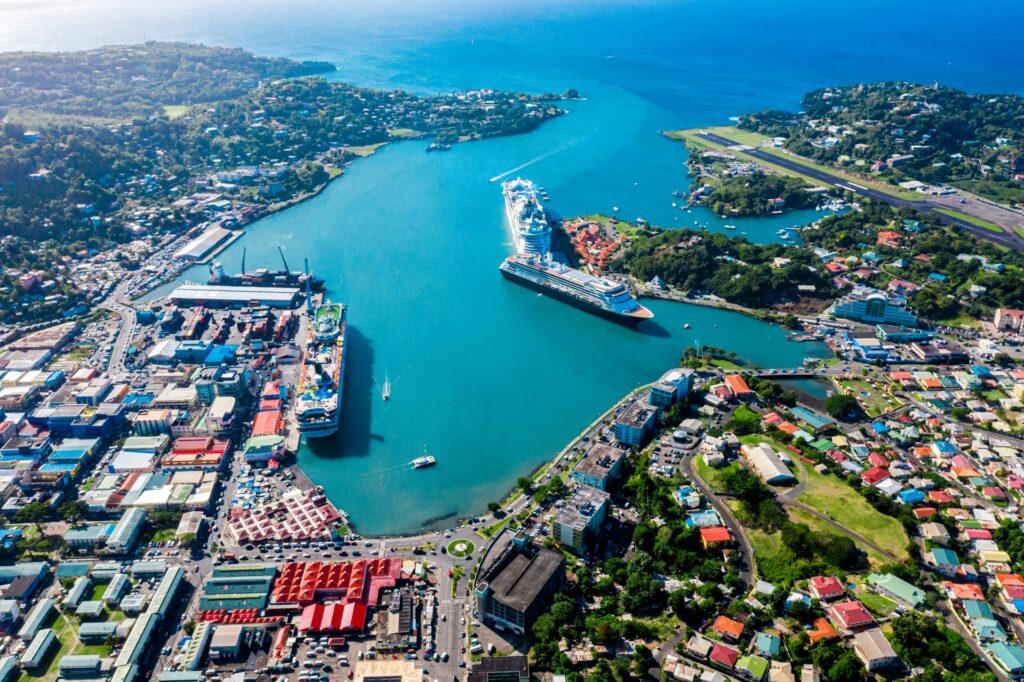
St. Lucia is known for its luxury resorts, making it seem like a pricey destination. But beyond the fancy tourist spots, there’s a more affordable side to the island—especially in the capital, Castries.
Here, you can experience the true island life, where things move at a slower pace and life revolves around the community, not just vacations.
For expats, living here can be surprisingly budget-friendly if you steer clear of the touristy areas. You’ll find affordable housing, local markets full of fresh produce, and a lifestyle that centers around simple pleasures, like hiking or enjoying meals with neighbors.
Monthly Budget Breakdown:
Housing ($325 – $510): A one-bedroom apartment outside the city center costs about $325, while one in the heart of Castries is around $510.
Utilities ($115 – $160): Expect to pay around $115 for basic utilities, plus about $45 for high-speed internet.
Groceries ($350 – $450): Shopping at local markets keeps costs low, with a week’s worth of groceries running about $50. Imported goods can get pricey, though.
Transportation ($50 – $300): Buses are the cheapest option, but if you need a car, it can cost around $300 a month for fuel, insurance, and maintenance.
Dining & Entertainment ($150): Eating out at local spots is affordable, with meals starting at $8. A nice three-course meal for two might set you back around $60.
Estimated Total (without car): ~$1,100 – $1,400
Estimated Total (with car): ~$1,350 – $1,700
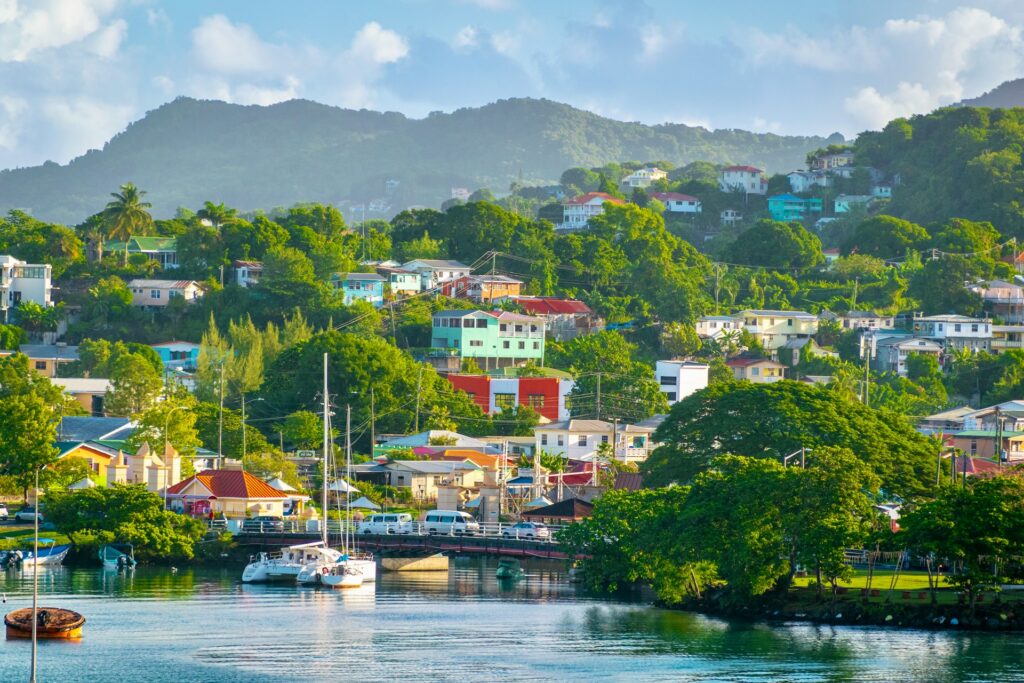
Living Like a Local:
- Castries offers plenty of low-cost activities for cultural immersion:
- Explore the Castries Central Market for local produce and spices.
- Hike trails like Tet Paul Nature Trail for stunning views of the Pitons.
- Relax at Vigie Beach or La Toc Beach, which are free to access.
- Visit historic spots like Morne Fortune and Derek Walcott Square.
Practical Tips for Expats:
Visas: Most tourists can stay for up to six weeks without a visa, but longer stays require an application.
Safety: St. Lucia is generally safe, but be cautious in tourist areas and secure your belongings.
Healthcare: The island’s healthcare system is basic, so international insurance is recommended for long-term stays.
When it comes to transportation, you can keep your costs low by using public transport or embrace island life with a car for more freedom (though that will push your budget higher). The choice is yours!
Also See: 14 Countries Giving Out Dual Citizenship Like Candy (No Red Tape, No Waiting)
2. Puerto Viejo, Costa Rica
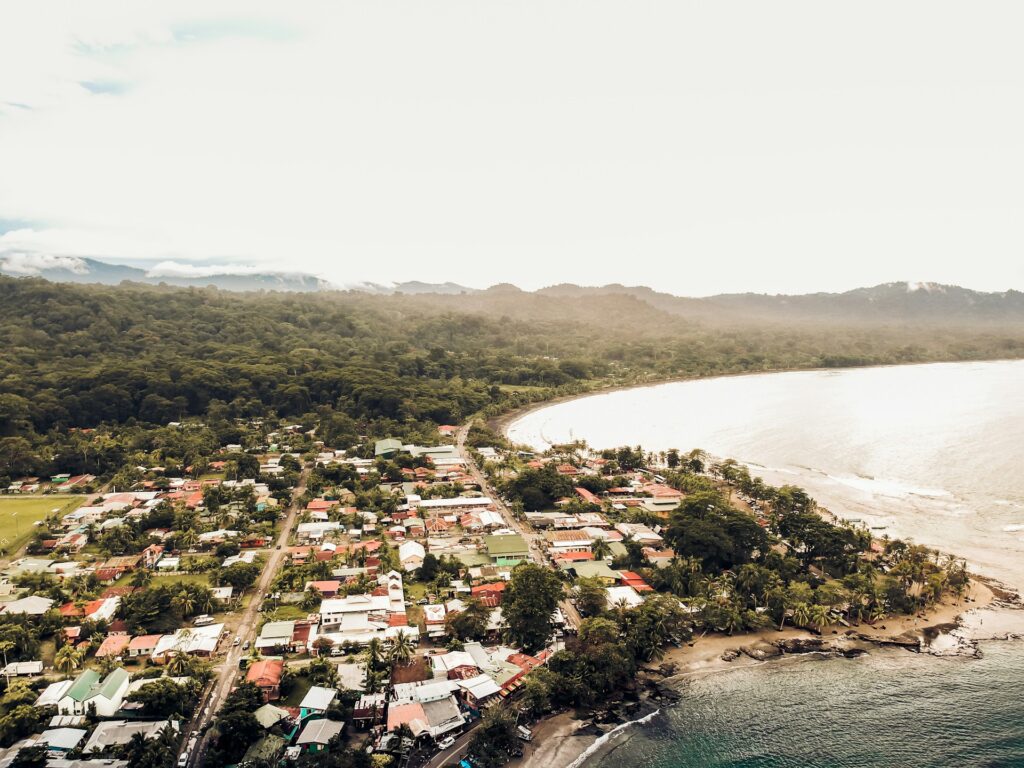
Located on Costa Rica’s southern Caribbean coast, Puerto Viejo is all about the “Pura Vida” lifestyle, a laid-back, nature-loving vibe that blends Afro-Caribbean, BriBri indigenous, and international cultures.
Life here moves slowly, with mornings spent surfing at Playa Cocles and afternoons cycling to quiet, undeveloped beaches. It’s a haven for surfers, yoga lovers, and eco-conscious folks who prefer rustic charm over touristy glitz.
Monthly Budget Breakdown:
Housing ($600 – $900): Rent for a simple one or two-bedroom place is affordable, especially if you live a bit outside the town center. Prices go up near the beach and with amenities like air conditioning.
Utilities ($100 – $150): Expect around $80-$100 for basic utilities. Add another $30-$50 for internet.
Groceries ($400): Shopping at local markets and eating at “sodas” (small local restaurants) keeps food costs low—around $6-$8 per meal.
Transportation ($50 – $100): Biking is the way to get around, and it’s super affordable. If you prefer a car, costs will go up, but biking keeps your budget in check.
Dining & Entertainment ($250): This covers meals at local sodas, coffee at cafes, and some occasional dining at mid-range restaurants (around $10-$20 per main dish).
Estimated Total: ~$1,400 – $1,800
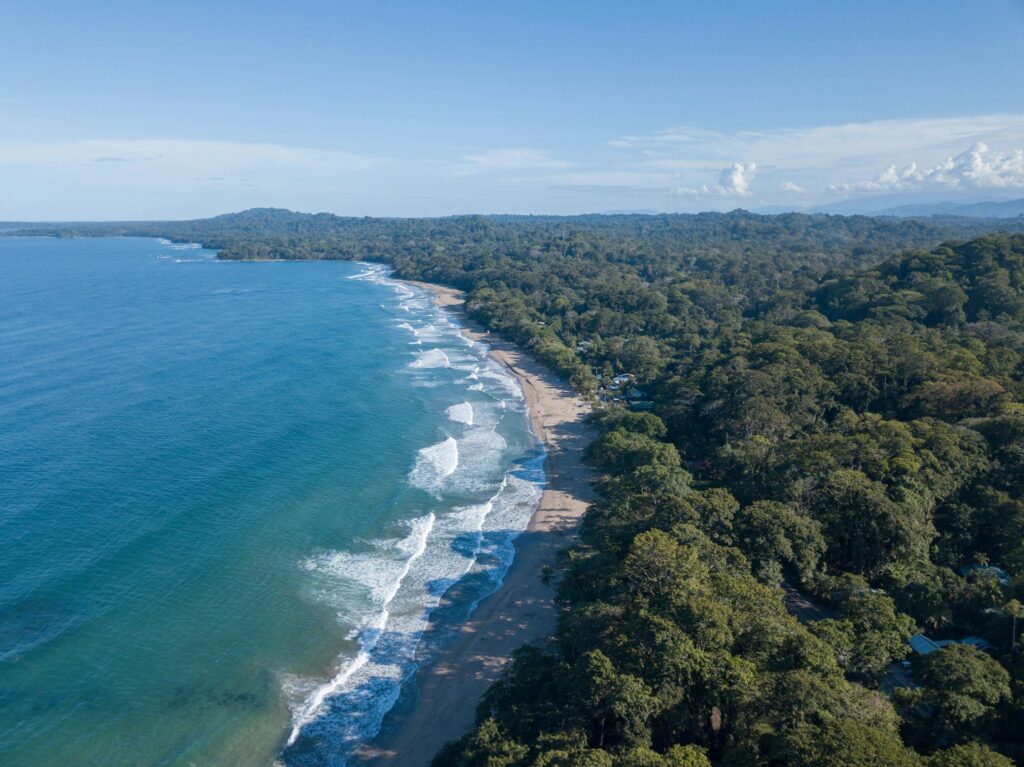
Living Like a Local:
Puerto Viejo is all about enjoying nature and the simple life:
- Beach Hopping: Rent a bike and explore stunning beaches like Playa Negra, Playa Cocles, and Playa Punta Uva.
- Wildlife: Check out Cahuita National Park for sloth sightings or visit the Jaguar Rescue Center to learn about animal rehabilitation.
- Culture: Dive into the local chocolate culture with a tour of a cacao farm, where you can learn the history of chocolate in the region.
Practical Tips for Expats:
Visas: US, Canadian, and EU citizens can stay up to 180 days with just a passport. Long-term stays may require a visa, such as the Pensionado (for retirees) or the Digital Nomad visa.
Safety: Puerto Viejo is generally safe, but like any place, be cautious of petty theft. Always lock up and avoid walking alone at night.
Healthcare: Costa Rica has great healthcare, but in remote Puerto Viejo, you’ll need to travel to San José for serious treatments. Private health insurance is a must.
While life in Puerto Viejo is affordable, the path to long-term residency might require a higher income than you actually need to live comfortably here, which can be a bit of a catch-22 for many expats. Still, with a simple lifestyle, it’s a place where you can live well on a budget and soak in the Pura Vida spirit!
Read: 10 Expat-Friendly Cities Where You Can Actually Live Like a Millionaire on Just $1,500 a Month
3. Havana, Cuba
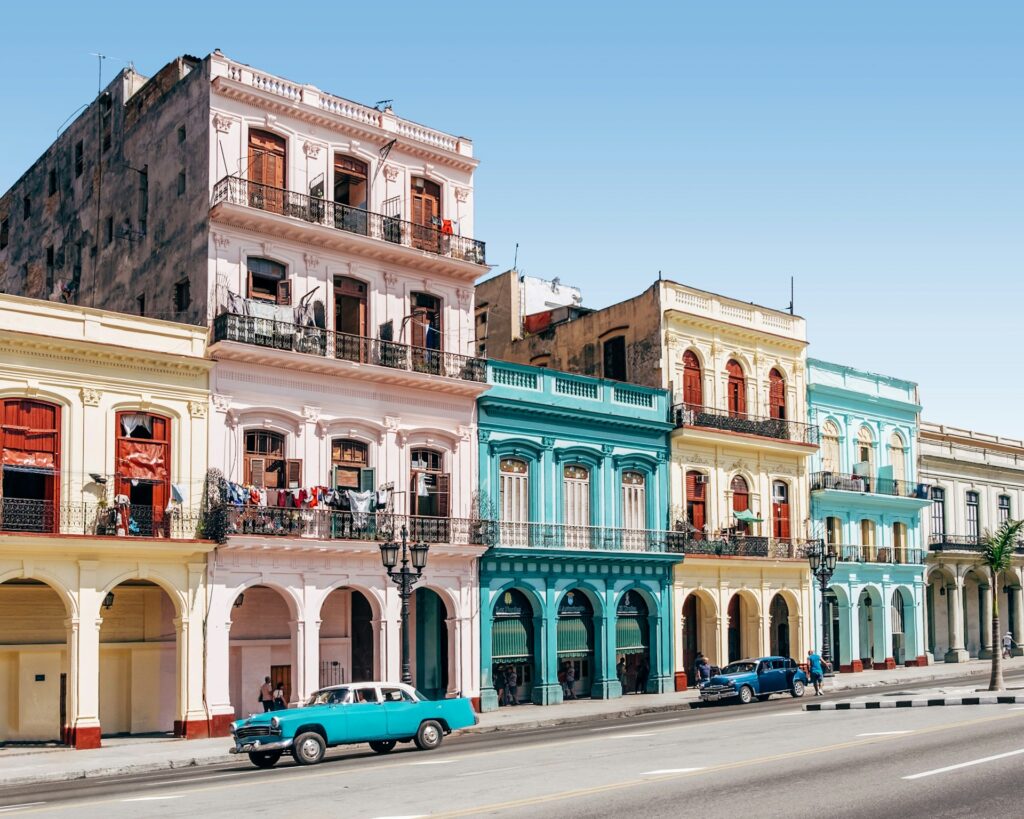
Havana is a city that feels both timeless and constantly alive. With its beautiful, crumbling colonial buildings and the sound of rumba in the streets, it’s a place where life is lived outdoors, on apartment stoops, in the parks over games of dominoes, or along the iconic Malecón seawall.
The rhythm of daily life here is unpredictable, but for those ready to embrace its challenges, Havana offers a deep cultural experience and a connection to history like no other.
Monthly Budget Breakdown:
Housing ($250 – $400): Rent a room or apartment in a “casa particular” (private home), with prices varying by location. A one-bedroom in Vedado or other central areas typically costs $250 to $400.
Utilities ($50 – $110): Basic utilities are cheap, but internet can be costly and unreliable, often adding up to $75. Many locals use expensive mobile data to stay connected.
Groceries ($200 – $300): Food costs depend on what’s available, but $200-$300 should cover essentials by shopping at both government-run bodegas and local markets.
Transportation ($30 – $50): Public buses are cheap but overcrowded. Almendrones (shared taxis) are the most common way to get around, offering fixed routes for a low price.
Dining & Entertainment ($100): Cuba’s growing restaurant scene, known as paladares, serves affordable, delicious meals. A three-course dinner for two at a mid-range restaurant costs under $30. Many of Havana’s best activities, like enjoying live music or strolling the Malecón, are free.
Estimated Total: ~$630 – $960
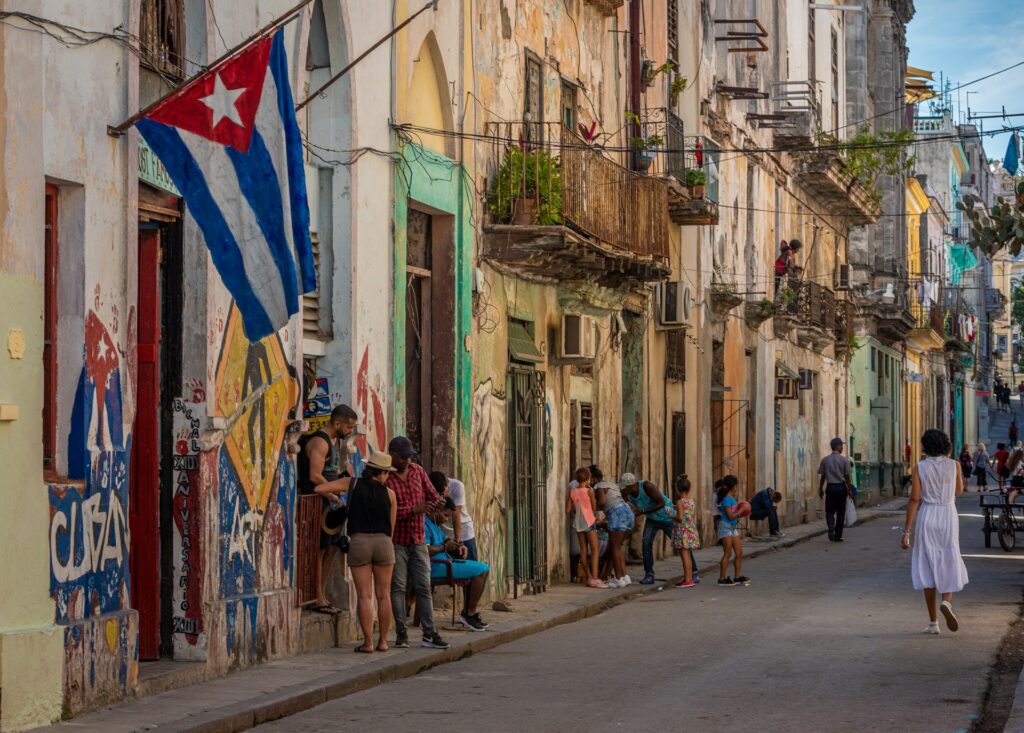
Living Like a Local:
Havana is all about engaging with its street culture and rich history.
- Stroll the Malecón: The five-mile seawall is the city’s gathering spot, perfect for watching sunsets, chatting with locals, or fishing.
- Explore Habana Vieja: Wander through Old Havana’s cobbled streets, a UNESCO World Heritage site full of history and charm.
- Music & Dance: From impromptu street performances to legendary jazz clubs, music is the heart of Havana. Join in or just soak it all in.
- Simple Pleasures: Enjoy a game of dominoes in the park, sip a coffee at a local café, and watch daily life unfold around you.
Practical Tips for Expats:
Visas: Tourist cards are valid for 30-90 days. Long-term residency is tricky and requires specific reasons like being married to a Cuban or working for a Cuban entity.
Safety & Economy: While crime is low, economic issues are the biggest concern. Credit cards (especially US ones) don’t work due to the embargo, so bring enough cash to last your stay.
Healthcare: Cuba has great doctors, but the healthcare system is under-resourced. Expats typically use international clinics where care can be good but limited.
Living in Cuba as an expat means navigating a unique economic reality. The cost of living is low by Western standards, but with the informal economy and government subsidies at play, foreigners are seen as wealthy, which can create social barriers and even expose you to scams.
It’s an affordable place to live, but true integration can be tough, and the cultural differences are palpable.
Check: No One Tells You This: 12 Beautiful Places You Can Live Comfortably for Less Than $2,500 a Month
4. Caye Caulker, Belize
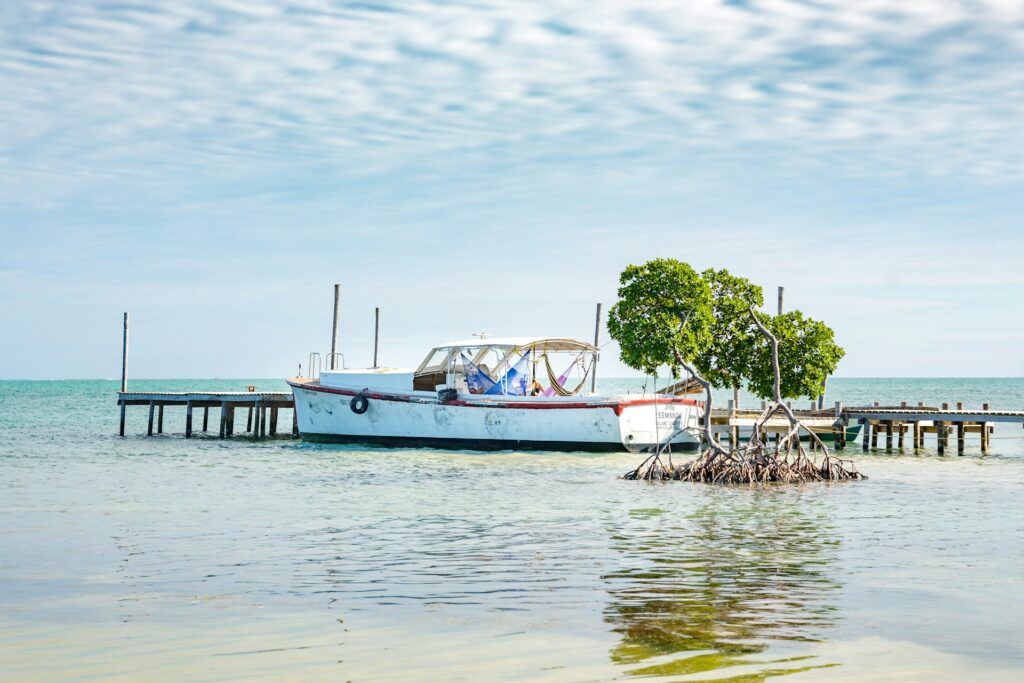
Caye Caulker lives by its motto: “Go Slow.” This small, serene island in the Caribbean operates at its own relaxed pace. With no paved roads, cars, or rush hour, life is centered around its stunning beaches and turquoise waters.
The Belize Barrier Reef, just a mile offshore, offers world-class diving and snorkeling. People here embrace simplicity, whether it’s walking barefoot down sandy streets, biking to the local café, or enjoying a sunset at the Lazy Lizard bar.
It’s a haven for divers, expats, and anyone seeking a laid-back, minimalist lifestyle.
Monthly Budget Breakdown:
Housing ($600 – $1,200): Renting a modest one-bedroom Belizean-style house or apartment costs about $600 to $800 per month. A more modern, air-conditioned apartment near the beach will go up to $1,200.
Utilities ($150 – $250): Utilities are reasonable but the key cost is electricity, as air conditioning is pricey. Expect around $150 for electricity if you’re using A/C sparingly. Add $100 for water, cooking gas, and internet.
Groceries ($300 – $400): Eating local seafood, chicken, rice, beans, and fresh produce helps keep the grocery budget low. Imported goods, however, are expensive due to high taxes. Many residents take water taxis to Belize City for cheaper shopping.
Transportation ($50): With no cars, getting around the island is easy and cheap. Most people walk or bike. If you prefer, a golf cart rental can cost around $300/month, but it’s not necessary. This budget includes occasional water taxi trips to nearby islands or the mainland.
Dining & Entertainment ($200): Enjoying meals at local restaurants or roadside stands is affordable, with dishes ranging from $6 to $15. The island’s most famous hangout is The Split, where you can enjoy a cold drink and a great view.
Estimated Total: ~$1,300 – $1,900
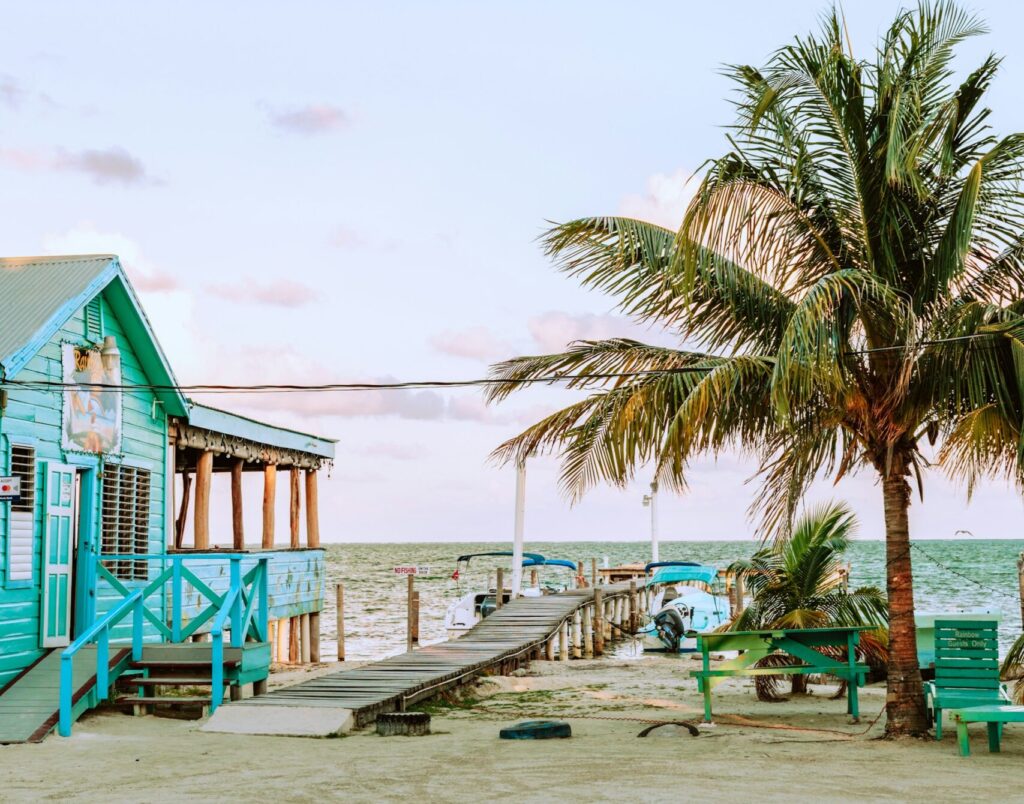
Living Like a Local:
Caye Caulker’s lifestyle revolves around the island’s natural beauty and laid-back vibe.
- Snorkeling and Diving: Explore the Belize Barrier Reef, including famous spots like Hol Chan Marine Reserve and Shark Ray Alley. The water is teeming with marine life, making it a paradise for divers and snorkelers.
- The Split: A must-see spot on the island, where you can swim in the crystal-clear waters, lounge at the Lazy Lizard beach bar, and watch the boats sail by.
- Kayaking & Paddleboarding: Rent a kayak or paddleboard and glide over the calm waters around the island. It’s a great way to see the coastline and marine life from a new perspective.
- Biking: Rent a bike and explore the quieter, southern parts of the island, where you’ll find undeveloped natural areas and local neighborhoods.
Practicalities for Expats:
Visas: Most visitors can enter Belize for 30 days with just a passport. For longer stays, you can get a monthly visa stamp from the immigration office. For those interested in long-term residency, Belize’s Qualified Retirement Person (QRP) program offers tax incentives for individuals over 45 with a monthly income of at least $2,000.
Safety: Caye Caulker is very safe, with a small, tight-knit community. Petty theft is the most common issue, so securing your belongings and locking doors is advised.
Healthcare: The island has a basic clinic for minor illnesses and injuries. For more serious medical needs, you’ll need to go to Belize City or Mexico. Expats are encouraged to have international health insurance.
Caye Caulker’s charm lies in its simplicity. The island’s minimal development, no cars, no paved roads, and limited amenities, keeps living costs low. Without the distractions and expenses of modern life, it’s easy to embrace a slower pace.
Dining out is affordable, transportation is cheap, and the overall vibe is focused on simple pleasures. For those looking for a quiet, affordable place to live where relaxation is the main currency, Caye Caulker is a true paradise.
Also See: Get Free Residency: 6 Countries Where Americans Can Buy Property and Get Instant Residency
5. Port of Spain, Trinidad
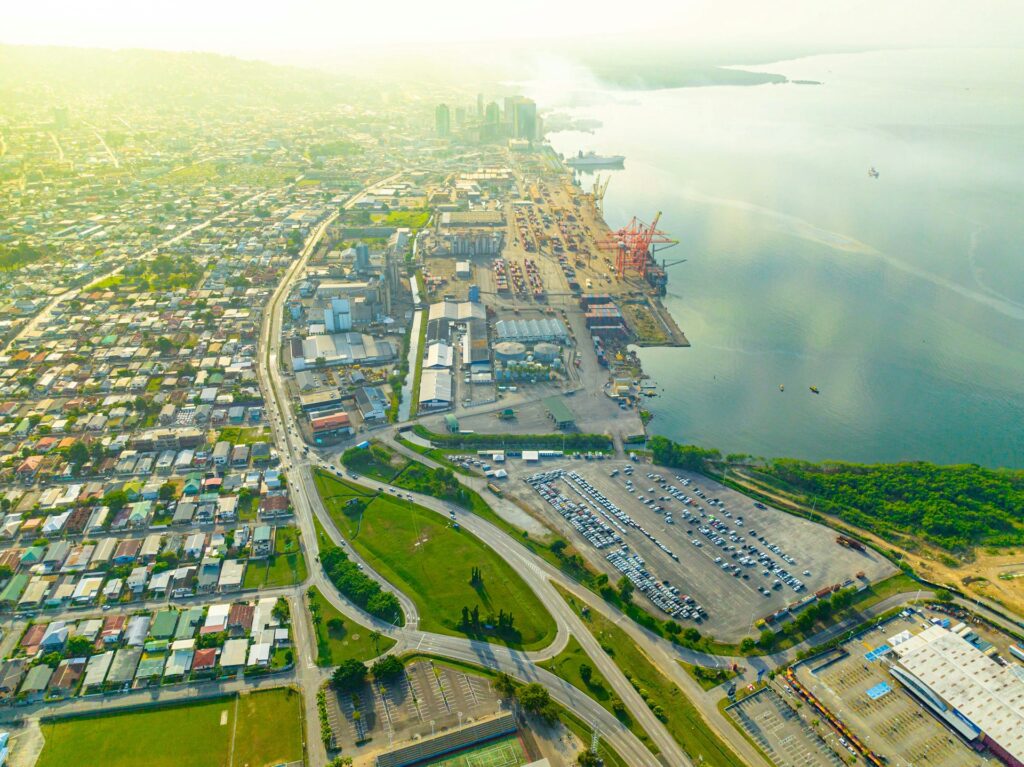
Port of Spain is the heart of Trinidad and Tobago, and it offers an urban Caribbean experience that’s as vibrant as it is diverse. As the nation’s capital, it pulses with energy; think colorful festivals, rich street food culture, and an eclectic mix of African, Indian, European, and Chinese influences.
The city feels more like a small international hub than a quiet beach town, with a rhythm shaped by oil and gas industries, professional work culture, and a bustling urban lifestyle. While Maracas Bay’s picturesque beaches are just a short drive away, Port of Spain’s true character comes alive in its lively markets, nightlife, and green spaces like Queen’s Park Savannah.
Monthly Budget Breakdown:
Housing ($400 – $650): Rent in Port of Spain is relatively affordable, though the price can vary based on location. A one-bedroom apartment in the city center typically costs between $540 and $650, while living slightly outside the center can bring that down to about $400.
Utilities ($150 – $200): Utilities like electricity, water, and garbage collection are relatively inexpensive, thanks to government subsidies. A standard apartment will cost about $76-$95 per month. A bundled internet and cable package adds another $60-$90.
Groceries ($400 – $500): Food costs depend on how much local versus imported food you buy. A reasonable budget of $400-$500 allows for a mix of locally grown produce and imported items. Shopping at local markets can keep the grocery bill around $150, but a more diverse selection will push the budget to the higher end.
Transportation ($100 – $150): Public transportation is affordable with “maxi taxis” (shared minibus taxis) costing around $74 for a monthly pass. However, many expats find it more convenient and safe to own a car, though that can be expensive in terms of both initial cost and gasoline. For budget-conscious expats, this estimate assumes public transportation with occasional taxi rides.
Dining & Entertainment ($250): The food scene in Port of Spain is incredible. Street food is not only delicious but also cheap—try the famous “doubles” or enjoy a meal at a local eatery for around $10. Mid-range restaurants are affordable too, with meals for two costing about $45.
Estimated Total: ~$1,300 – $1,750
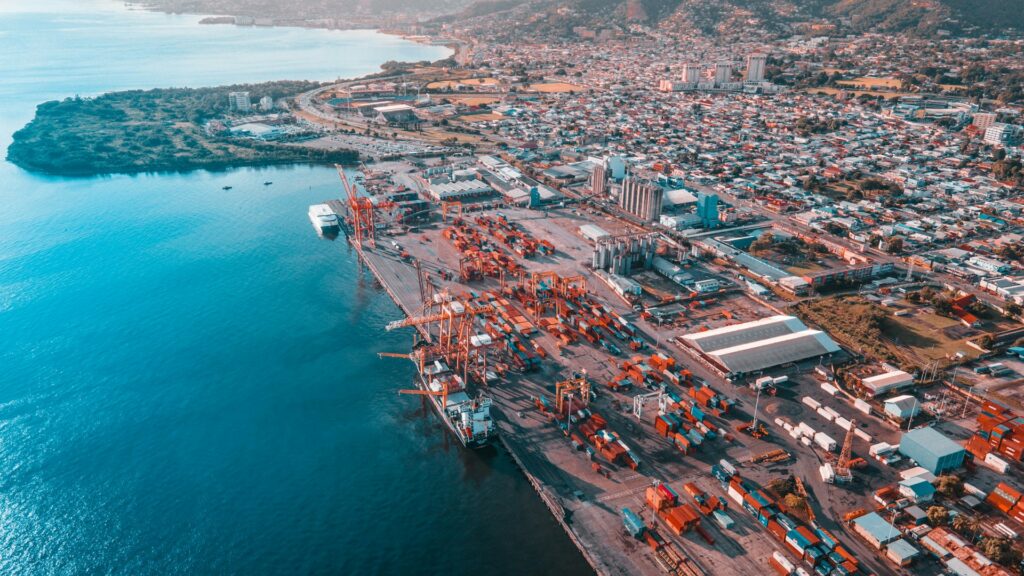
Living Like a Local:
- Explore the City’s Landmarks: Start with the Magnificent Seven—seven grand mansions that line the Queen’s Park Savannah. Visit the Royal Botanic Gardens, the National Museum & Art Gallery, and the historic Woodford Square.
- Experience the Food Culture: The food scene here is a must. Head to St. James for a local street food tour or enjoy Maracas Bay’s “Bake and Shark”, a sandwich of deep-fried shark with fresh toppings, a local delicacy.
- Embrace the Festivals: If you’re lucky enough to visit during Carnival, you’ll see why it’s one of the most famous festivals in the world. Music, costumes, and dancing fill the streets. Don’t miss out on hearing soca and calypso music, especially since Trinidad is the birthplace of the steelpan drum.
- Nature Escapes: Even in the midst of urban life, you can find peace in nature. Take a boat tour of the Caroni Bird Sanctuary, where you’ll witness thousands of scarlet ibises flying back to their roost at sunset.
The Fine Print – Practicalities for Expats:
Visas: Citizens of the US, UK, Canada, and EU countries can enter Trinidad and Tobago for up to 90 days without a visa. If you want to stay longer, you’ll need to apply for a visa or work permit.
Safety: While Port of Spain has a lot to offer, safety remains a major concern. The city has a high level of violent crime, much of it gang-related. Expats are urged to stay vigilant, avoid displaying wealth, and be cautious when traveling at night. Some areas are best avoided, especially after dark.
Healthcare: Trinidad and Tobago has both public and private healthcare systems. While the public healthcare system exists, many expats opt for private healthcare in Port of Spain, where the quality is higher. Comprehensive health insurance is recommended for expats.
The cost of living is affordable by global standards, and the economy offers stability thanks to its oil and gas industries. However, life here requires some adjustment, especially in dealing with safety concerns and urban challenges like traffic.
For expats who want the energy and dynamism of a city, with the cultural richness of the Caribbean, Port of Spain offers an ideal mix of both.
6. Negril, Jamaica
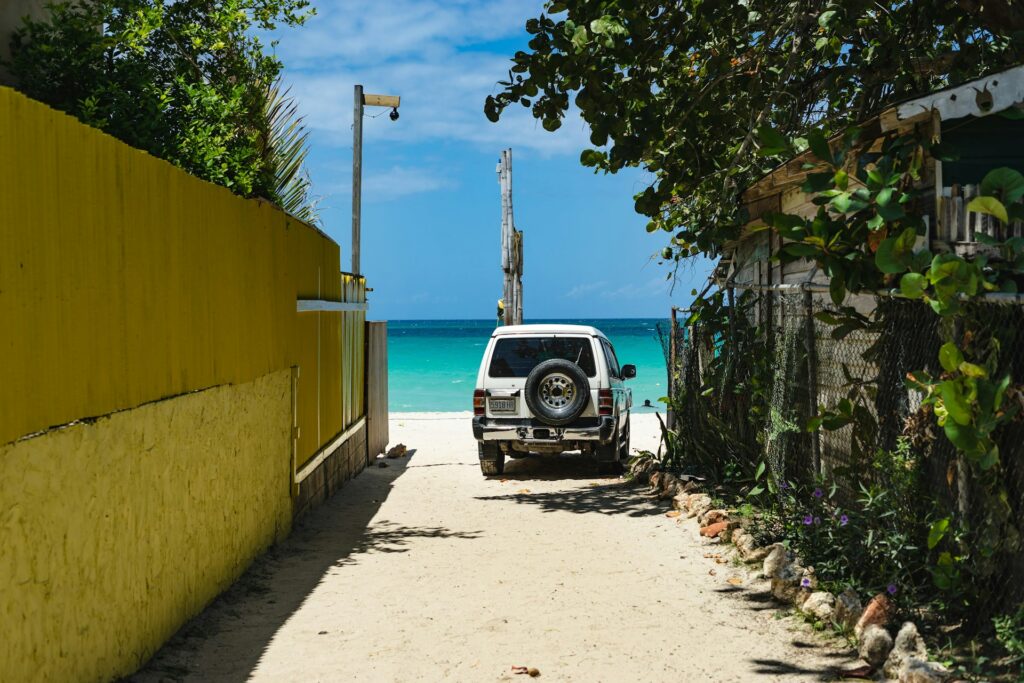
Negril is renowned for its iconic Seven Mile Beach, offering a relaxed, beach-focused lifestyle. The town has two distinct personalities: the lively beach area with bars and restaurants, and the quieter West End cliffs, home to spots like Rick’s Café. Reggae music fills the air, and the atmosphere is laid-back and fun, largely influenced by the tourism industry.
Monthly Budget Breakdown:
Housing ($750 – $1,100): Rentals range from around $750 for a simple one-bedroom apartment to $1,100 for a beachside property. Local housing away from the tourist areas can be more affordable.
Utilities ($200 – $250): Utilities like electricity, water, cooking gas, and internet are relatively affordable, but air conditioning can increase electricity costs.
Groceries ($300 – $400): Food costs can be high if buying imported goods. Shopping at local markets for fresh produce can save you money. Expect to spend $300–$400 for a mix of local and imported items.
Transportation ($50 – $100): Getting around Negril is easy with cheap taxis and scooters. A car is unnecessary for daily living.
Dining & Entertainment ($200): Dining at tourist spots can be pricey, but local “cookshops” and food vendors offer authentic meals for much less, $5-$20 per dish.
Estimated Total: ~$1,500 – $1,950
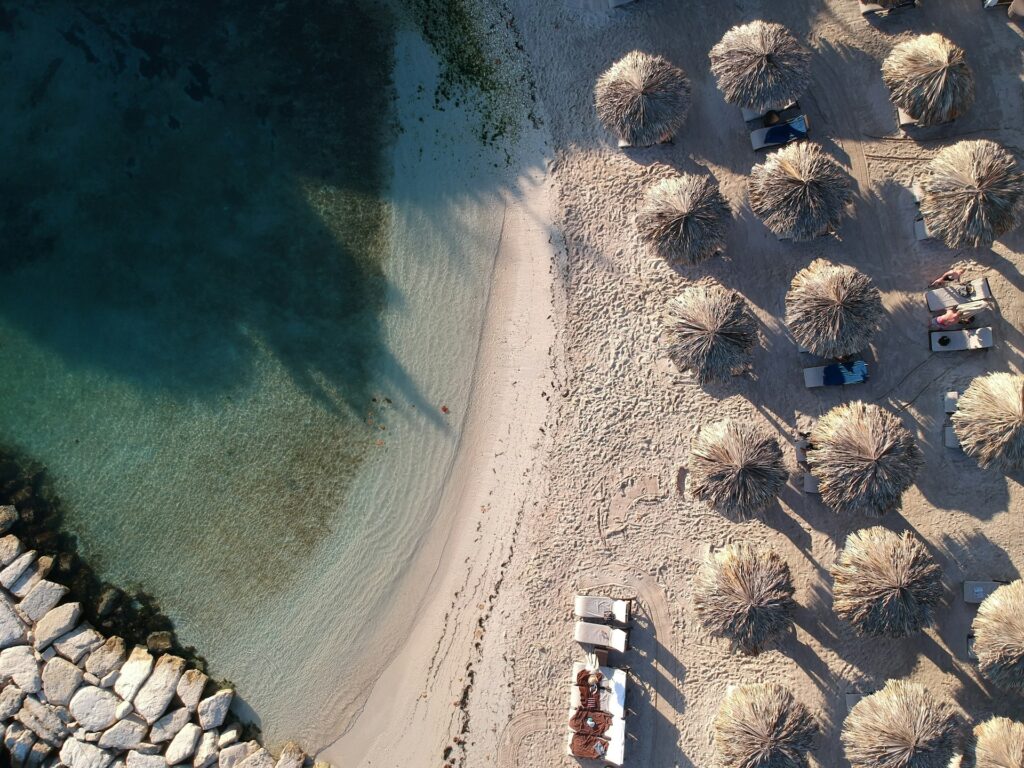
Living Like a Local:
- Beach Life: Enjoy Seven Mile Beach for swimming and sunbathing, or visit quieter beaches like Bloody Bay.
- West End Cliffs: Watch sunsets and cliff divers at Rick’s Café or enjoy more relaxed cliffside bars.
- Live Music: Reggae shows are a staple of Negril’s nightlife.
- Water Activities: Try snorkeling, diving, or a glass-bottom boat tour to nearby Booby Cay Island.
- Day Trips: Explore YS Falls or take a bamboo raft ride down the Martha Brae River.
The Fine Print – Practicalities for Expats:
Visas: US, Canadian, and UK citizens can stay for up to 90 days without a visa. Extensions or residency permits are needed for longer stays.
Safety: While Negril is safer than larger cities, crime still occurs. Be cautious, especially at night, and avoid displaying valuables.
Healthcare: Medical facilities in Negril are basic. For serious issues, travel to Montego Bay or Kingston. Health insurance with evacuation coverage is recommended.
Negril offers a relaxed lifestyle with the chance to enjoy its beach culture while living affordably if you shop like a local. Understanding the two-tiered economy, where locals and tourists often pay different prices, is key to keeping costs down.
7. St. George’s, Grenada
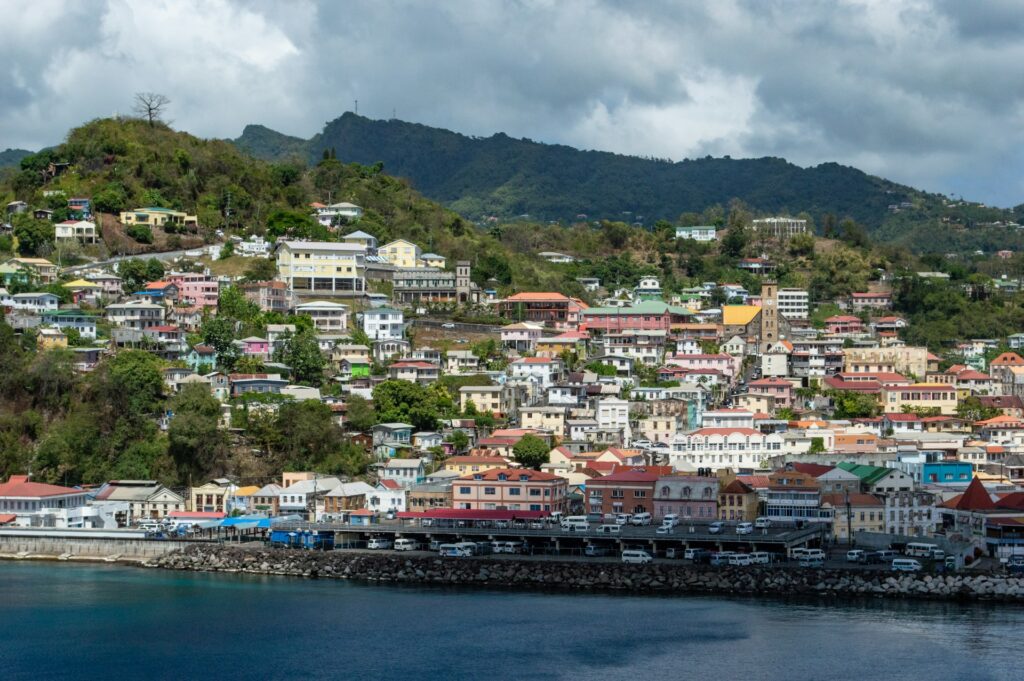
Grenada, known as the “Spice Isle,” offers a warm, authentic experience with its nutmeg, cinnamon, and cloves. The capital, St. George’s, is a picturesque harbor town with colorful colonial buildings and a tight-knit community.
The lifestyle is relaxed, with a strong focus on food, music, and natural beauty. It’s less crowded than many Caribbean destinations, making it a peaceful haven for expats.
Monthly Budget Breakdown:
Housing ($435 – $780): Rent is affordable, with city-center apartments averaging $780, while a one-bedroom outside the center can cost $435. Larger homes are available for around $660.
Utilities ($200 – $270): Utilities, including electricity, water, and high-speed internet, generally fall in this range.
Groceries ($350 – $450): Food is affordable when shopping locally, but imported goods are more expensive. Expect to spend around $350-$450 for groceries.
Transportation ($50 – $100): Public buses and taxis are affordable, with individual rides costing very little.
Dining & Entertainment ($150): Local restaurants are inexpensive, with meals costing $7-$20. A three-course meal for two at mid-range restaurants averages $75-$80.
Estimated Total: ~$1,200 – $1,600
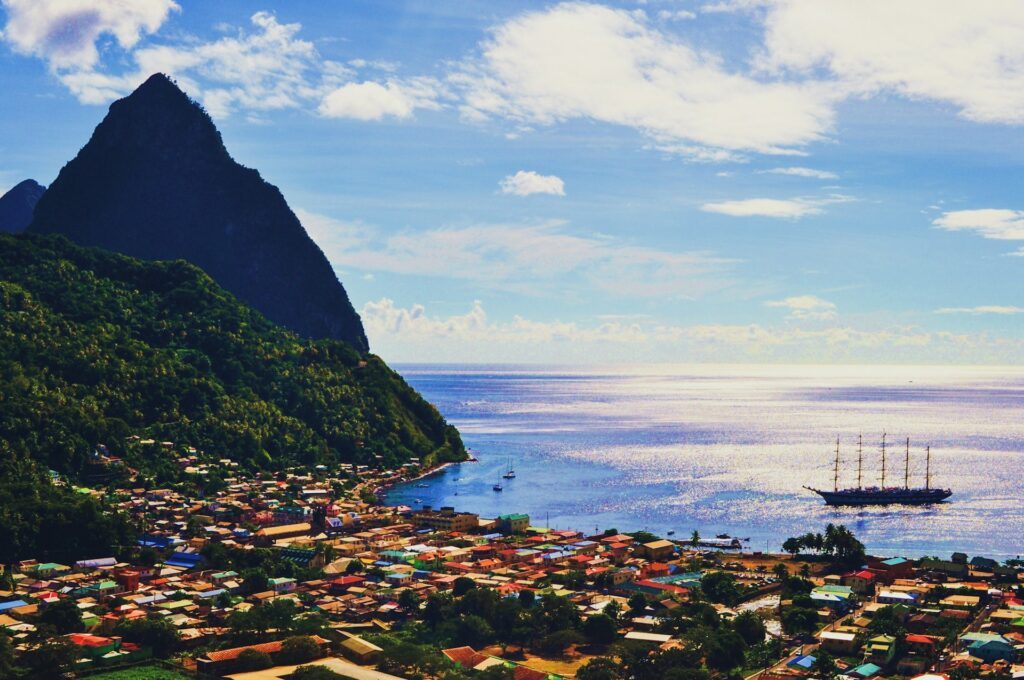
Living Like a Local:
- Explore St. George’s: Visit the historic Carenage, Fort George, and the vibrant St. George’s Market Square.
- Beaches & Water Sports: Relax on Grand Anse Beach or explore the world’s first Underwater Sculpture Park.
- Hiking: Hike the Grand Etang National Park, with waterfalls like the Concord Waterfalls.
- Taste the Island: Tour a nutmeg processing plant or visit a rum distillery.
Practicalities for Expats:
Visas: US, UK, Canadian, and EU citizens can stay for up to 90 days without a visa. Extensions or residence permits are required for longer stays.
Safety: Grenada is considered one of the safest Caribbean islands with a low crime rate.
Taxes & Currency: Grenada has a favorable tax regime with no capital gains or inheritance taxes. The currency is the Eastern Caribbean Dollar (XCD), pegged to the US dollar.
Healthcare: The public healthcare system is basic. Expats are advised to have private health insurance, especially for emergencies.
With its welcoming community, low crime rate, and favorable tax system, Grenada presents a well-rounded option for those seeking a peaceful and high-quality life without breaking the bank.
Also Read: 10 Countries That Will Pay Americans to Move There in 2025 (Seriously)
8. Isla Mujeres, Mexico
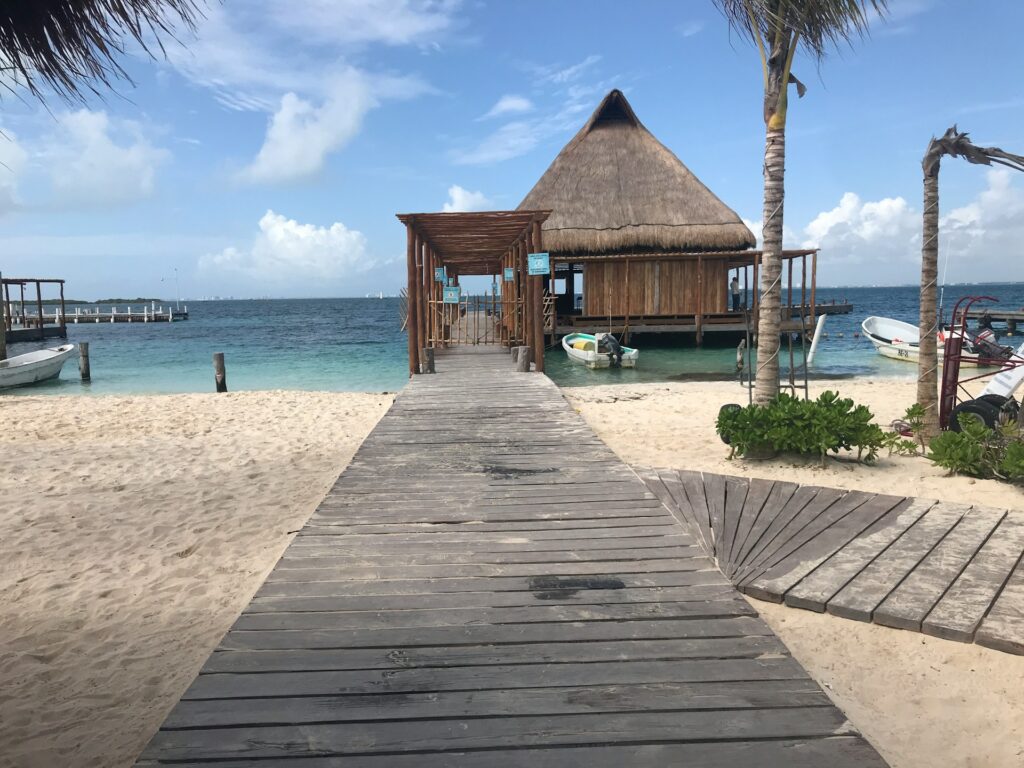
Isla Mujeres, just off the coast of Cancún, blends laid-back island life with the vibrancy of a popular tourist destination. The island’s main mode of transport is the golf cart, and its downtown, El Centro, is filled with colorful buildings, shops, restaurants, and bars.
It has a social, friendly vibe where locals, expats, and tourists mix easily, offering an inviting and relaxed atmosphere, yet with easy access to Cancún’s amenities.
Monthly Budget Breakdown:
Housing ($450 – $1,150): Affordable rental options are available, with a one-bedroom studio in the center starting at $453. Larger apartments outside the tourist zone can be found for around $660.
Utilities ($80 – $280): Basic utilities, including electricity, water, and internet, fall in this range, with costs varying based on air conditioning use.
Groceries ($300 – $400): While food is pricier than on the mainland due to transport costs, budgeting $300-$400 for groceries is reasonable.
Transportation ($50 – $100): Walking, biking, and scooters are popular for getting around. Frequent taxis or a scooter are sufficient for most expats.
Dining & Entertainment ($250): Dining out is affordable, with meals at local spots starting around $10. A mid-range three-course meal for two costs about $50.
Estimated Total: ~$1,130 – $1,980
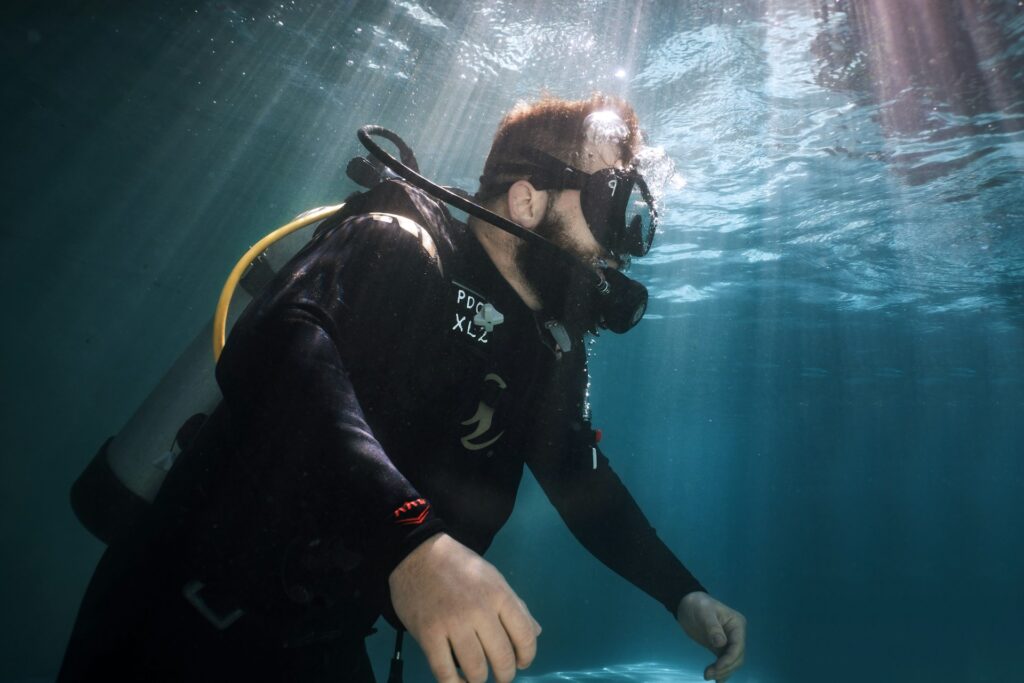
Living Like a Local:
- Relax on Playa Norte: One of the world’s most beautiful beaches, perfect for swimming and sunbathing.
- Explore by Golf Cart: Rent a golf cart to explore the island, visiting Punta Sur’s Mayan ruins and sculpture garden.
- Snorkel or Dive at MUSA: The underwater museum, with over 500 submerged sculptures, offers a unique snorkeling or diving experience.
- Swim with Whale Sharks: From June to September, swim with the world’s largest fish, a once-in-a-lifetime experience.
- Wander El Centro: Enjoy the pedestrian-only streets, vibrant murals, and local cafes and bars in downtown Isla Mujeres.
Practicalities for Expats:
Visas: Visitors can stay up to 180 days on a tourist permit. For longer stays, a Temporary Resident visa can be applied for, requiring proof of financial stability (e.g., monthly income of $4,350).
Safety: Isla Mujeres is considered very safe, with low crime and a strong police presence. General caution is recommended, as with any place in Mexico.
Healthcare: The island has a local clinic for basic needs, while more serious issues can be addressed in Cancún, just a short ferry ride away.
While living costs are slightly higher due to its island location, the proximity to Cancún for shopping, healthcare, and travel makes it an affordable option for expats. The relaxed vibe, social atmosphere, and access to both a tranquil lifestyle and modern conveniences make Isla Mujeres a desirable destination for long-term living.
9. St. John’s, Antigua and Barbuda
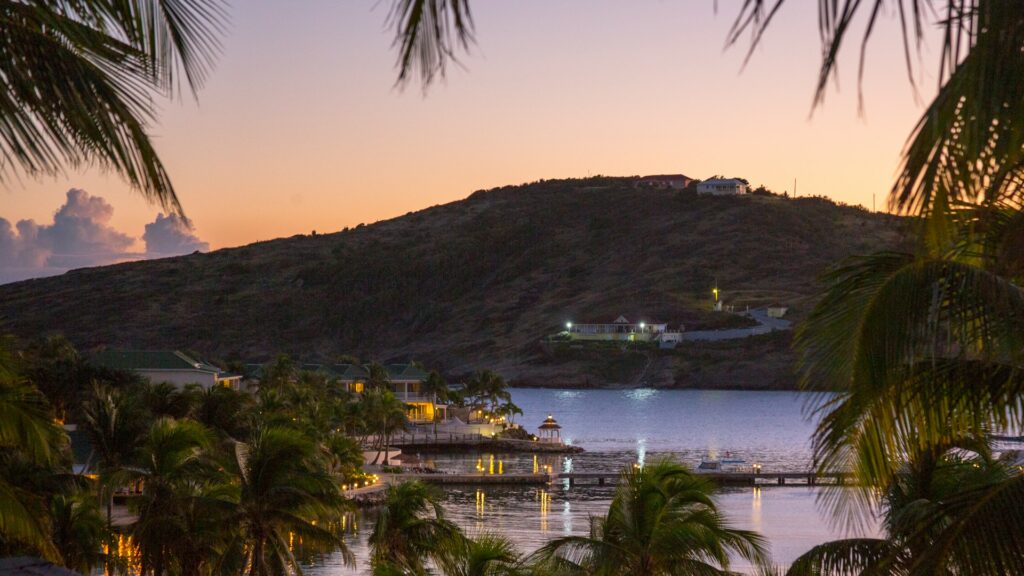
Antigua, known as the sailing capital of the Caribbean, offers a sophisticated yet relaxed lifestyle. St. John’s, the bustling capital, is home to colonial-era architecture, duty-free shopping, and a busy harbor, drawing cruise tourists and yachting enthusiasts.
The island’s charm is defined by its maritime culture and natural beauty, including 365 beaches, one for every day of the year. Antigua maintains a British influence, offering a blend of cosmopolitan living and island relaxation.
Monthly Budget Breakdown:
Housing ($740 – $900): Rent is a major expense. A one-bedroom apartment in or near St. John’s costs around $740, with cheaper options further inland.
Utilities ($200 – $250): Basic utilities, including cooling and water, are more expensive than in the US. Internet costs around $70 per month.
Groceries ($500 – $600): Due to high import costs, groceries are expensive, especially for non-local goods. A single person can expect to spend about $1,100 on living expenses excluding rent.
Transportation ($100 – $150): While a public bus system exists, most expats prefer having a car to navigate the island, as public transport is limited.
Dining & Entertainment ($200): Dining out can be pricey, with local meals around $10, and mid-range restaurant meals costing $50-$92 for two.
Estimated Total: ~$1,740 – $2,100
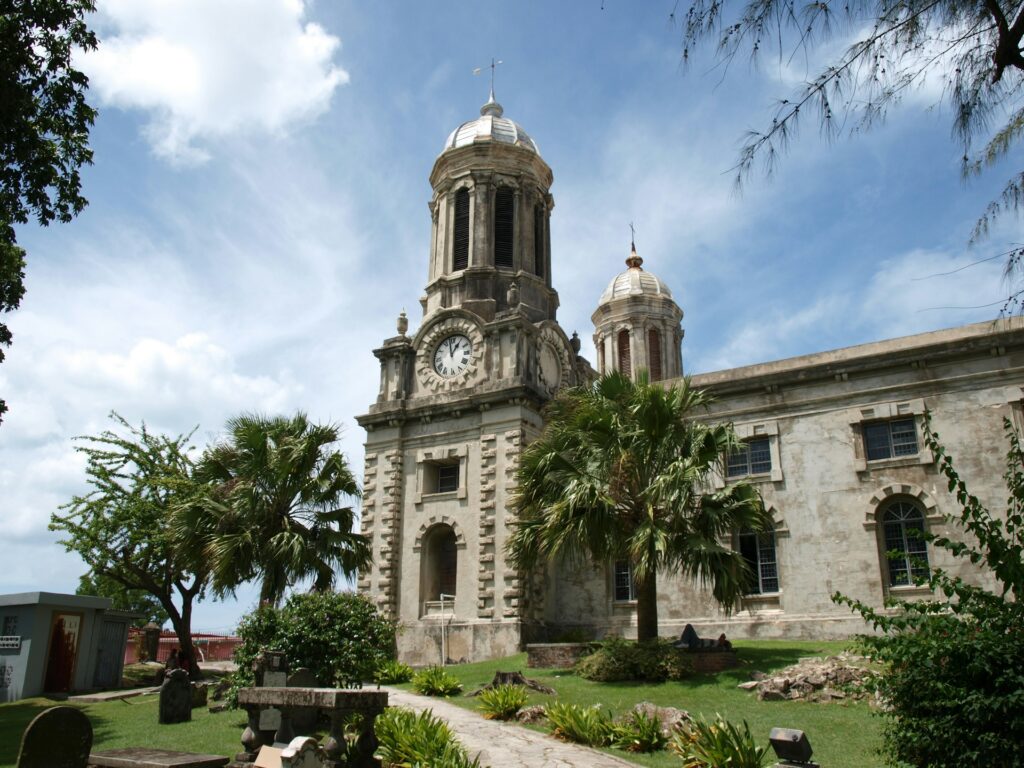
Brighton Pereira // Unsplash
Living Like a Local:
- Explore Historic Harbors: Visit Nelson’s Dockyard, an 18th-century British naval base, and hike to Shirley Heights for panoramic views and live music on Sundays.
- Beach Hopping: With 365 beaches, enjoy options like Dickenson Bay, which is popular for water sports and beach bars.
- Sailing & Water Sports: Take part in Antigua’s sailing culture, with excursions, catamaran tours, and snorkeling opportunities available.
- Discover St. John’s: Visit attractions like the Museum of Antigua and Barbuda, St. John’s Cathedral, and duty-free shopping at Heritage Quay.
Practicalities for Expats:
Visas: US, UK, Canadian, and EU citizens can stay for up to 180 days without a visa. For longer stays, a residence permit is required.
Safety: While St. John’s is relatively safe, violent crime, including robbery, has occurred. Exercise caution, especially at night and in isolated areas.
Healthcare: Healthcare is adequate for routine issues, but for serious conditions, evacuation to a larger medical facility may be necessary. Private health insurance is recommended.
Living in Antigua can be a challenge for those on a strict budget. While under $2,000 a month is possible, it requires lifestyle adjustments, including living far from the coast and limiting transportation and entertainment.
For those drawn to the island’s prestigious sailing culture, the trade-offs might be worth it, but it’s important to weigh the higher costs against the unique appeal of life on this beautiful island.
Read: These 12 Islands Let You Retire Rich With Zero Income Tax (Keep Every Cent!)
10. Punta Cana, Dominican Republic
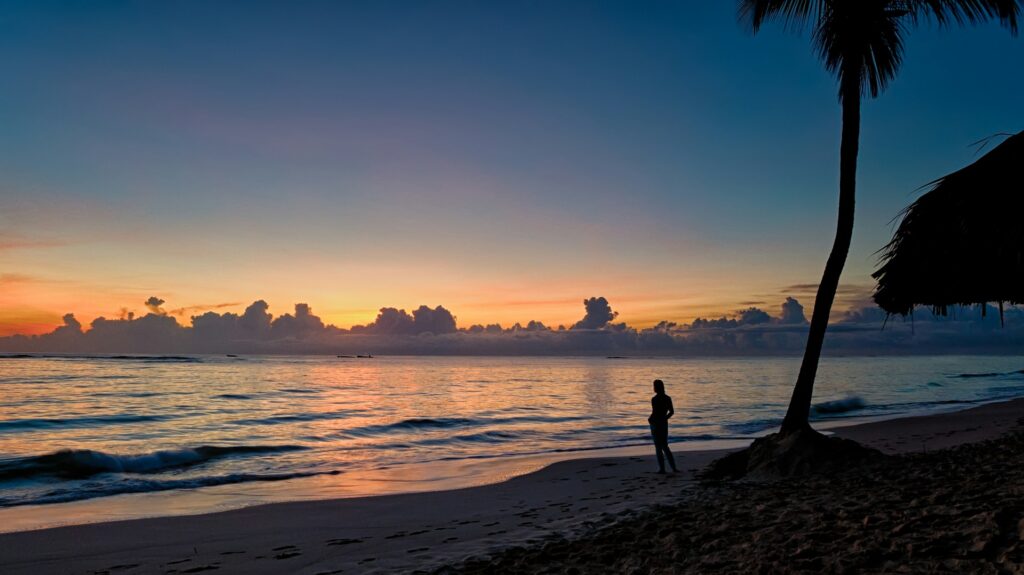
Punta Cana, known for its sprawling all-inclusive resorts, has developed a thriving expat community. While the beaches are stunning and attract many tourists, the town itself offers a more suburban lifestyle.
Expats live in modern, gated complexes with easy access to supermarkets, malls, and a reliable infrastructure. It’s a place where comfort meets Caribbean beauty, making it ideal for those who want to enjoy tropical living without giving up modern conveniences.
Monthly Budget Breakdown:
Housing ($400 – $850): Rent is quite affordable compared to other Caribbean locales. A one-bedroom apartment outside the main tourist areas starts at around $400, while a furnished apartment closer to the beach can cost around $850.
Utilities ($100 – $150): Utilities, including electricity, water, and gas, are affordable, averaging $60-$80. High-speed internet (50 Mbps) is about $33 per month.
Groceries ($350 – $450): Groceries are cheaper here than on many other islands. A single person can live well on a budget of $350-$450 by shopping at local markets and supermarkets. Basic items like rice and eggs are notably inexpensive.
Transportation ($100 – $150): While public transport is cheap, many expats choose to own a car for convenience. Gasoline costs about $1.23 per liter. This budget allows for a combination of personal vehicle and taxis.
Dining & Entertainment ($200): The area offers a variety of dining options, from inexpensive local eateries at $7 per meal to mid-range restaurants costing around $50 for a three-course meal. There’s also a vibrant nightlife scene with beach bars and clubs like Coco Bongo.
Estimated Total: ~$1,150 – $1,850
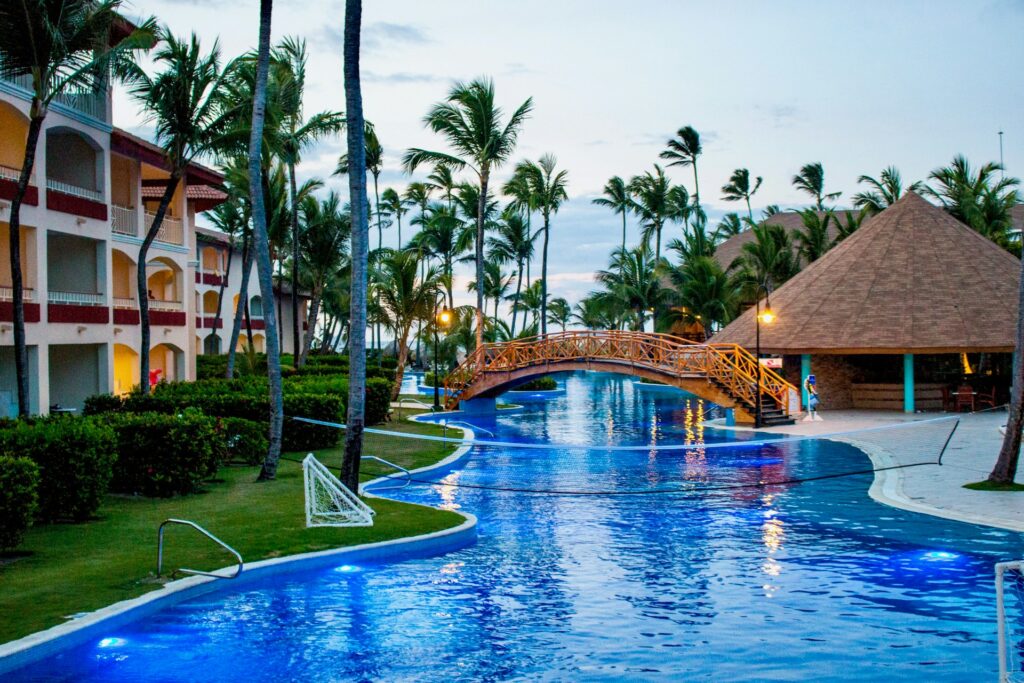
Living Like a Local:
- Explore World-Class Beaches: Relax at beaches like Bavaro Beach and Macao Beach, which are popular for water sports and local charm.
- Swim in Cenotes: Explore natural swimming holes like the Hoyo Azul Lagoon in Scape Park, where the crystal-clear water offers a stunning experience.
- Day Trips: Take a boat trip to Saona or Catalina Island, both are national park gems known for pristine beaches and excellent snorkeling.
- Golfing: Punta Cana is famous for its world-class golf courses, with courses designed by legendary names like Jack Nicklaus and P.B. Dye.
- Explore Higuey: Visit the nearby city of Higuey, known for its impressive Basílica Catedral Nuestra Señora de la Altagracia and its more traditional Dominican atmosphere.
Practicalities for Expats:
Visas: Expats can apply for residency through the Dominican consulate in their home country. There are several visa options, including the pensionado visa for retirees with a monthly pension of at least $1,500, or the rentista visa for those with a passive income of $2,000 or more per month.
Safety: Tourist areas are generally safe, but crime is a concern in certain parts of the Dominican Republic. It’s advised to live in secure communities, be cautious of your surroundings, and avoid displaying wealth.
Healthcare: The Punta Cana and Bavaro areas have modern private clinics and hospitals that cater to the expat population. Care is generally good, but comprehensive health insurance is recommended for peace of mind.
Punta Cana offers a “suburban Caribbean” lifestyle for those seeking modern comforts in a tropical paradise. It combines the allure of sunny beaches with the conveniences of contemporary living, such as gated communities, shopping malls, and reliable infrastructure.
While it lacks the rustic charm of more remote islands, it’s perfect for expats who prioritize comfort, convenience, and easy access to both beach life and modern amenities.
11. Willemstad, Curaçao
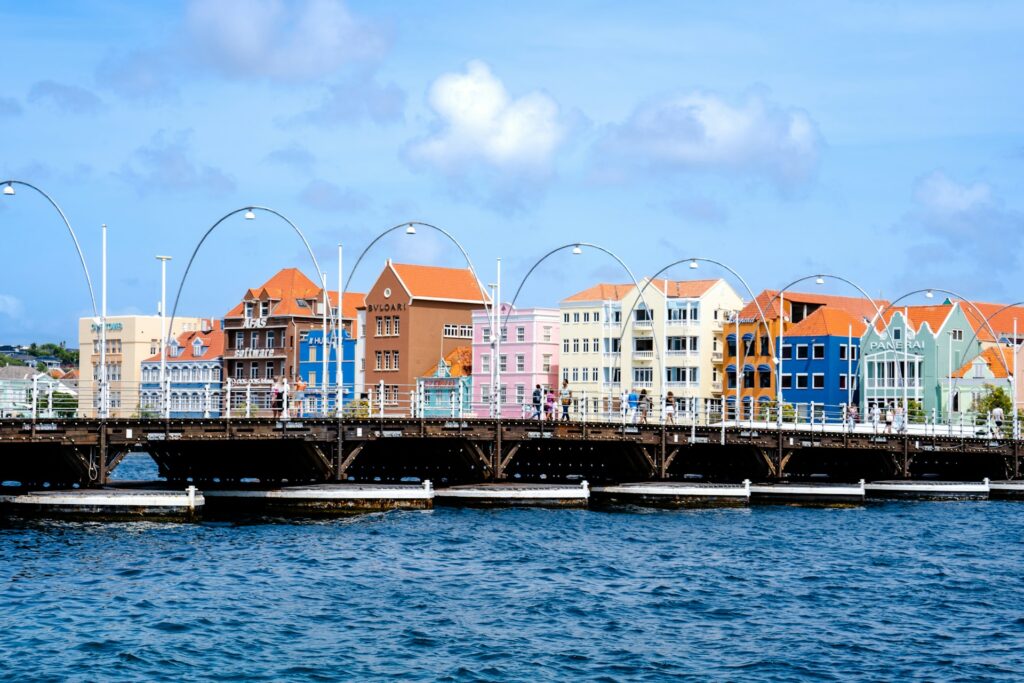
As a UNESCO World Heritage site, the city’s iconic Dutch colonial architecture, with its colorful buildings lining St. Anna Bay, gives Willemstad a distinct European feel. This is enhanced by a rich mix of African, Latin American, and Dutch influences, making Willemstad a cosmopolitan hub in the Caribbean.
The city is divided into two main districts: Punda and Otrobanda, connected by the famous Queen Emma Pontoon Bridge. The expat lifestyle here is urban and more refined, with a variety of cultural activities, museums, restaurants, and nightlife to enjoy.
Beaches and diving are just a short drive away, but the heart of the experience lies in the city itself.
Monthly Budget Breakdown:
Housing ($490 – $625): Rent in Willemstad is relatively affordable compared to the US or Europe. A one-bedroom apartment outside the city center averages $490 per month, while a similar apartment in the city center is about $622. Popular expat neighborhoods like Jan Thiel and Julianadorp are also available, but they tend to be more expensive.
Utilities ($275 – $350): Utilities, including electricity, water, and air conditioning, are higher compared to other Caribbean islands, typically over $200 per month. Adding in mobile and internet plans, which can cost $150 combined, utilities represent a significant part of the budget.
Groceries ($400 – $500): As an island that relies heavily on imports, groceries can be pricey, but they are still around 16% cheaper than in the US. A monthly grocery budget of $400-$500 is typical for a single person.
Transportation ($100 – $400): Public transportation is limited, so owning a car is essential for most expats. Gasoline is priced at around $1.31 per liter, and if you’re relying on public transport and taxis, your costs will be on the lower end. However, car ownership can push transportation costs to the higher end of the range.
Dining & Entertainment ($250): Dining out in Willemstad is pricier than on many other islands. A meal at an inexpensive restaurant costs around $20, and a three-course meal for two at a mid-range restaurant is typically over $80. The city has a lively culinary scene and vibrant nightlife, offering plenty of options for entertainment.
Estimated Total: ~$1,515 – $2,075
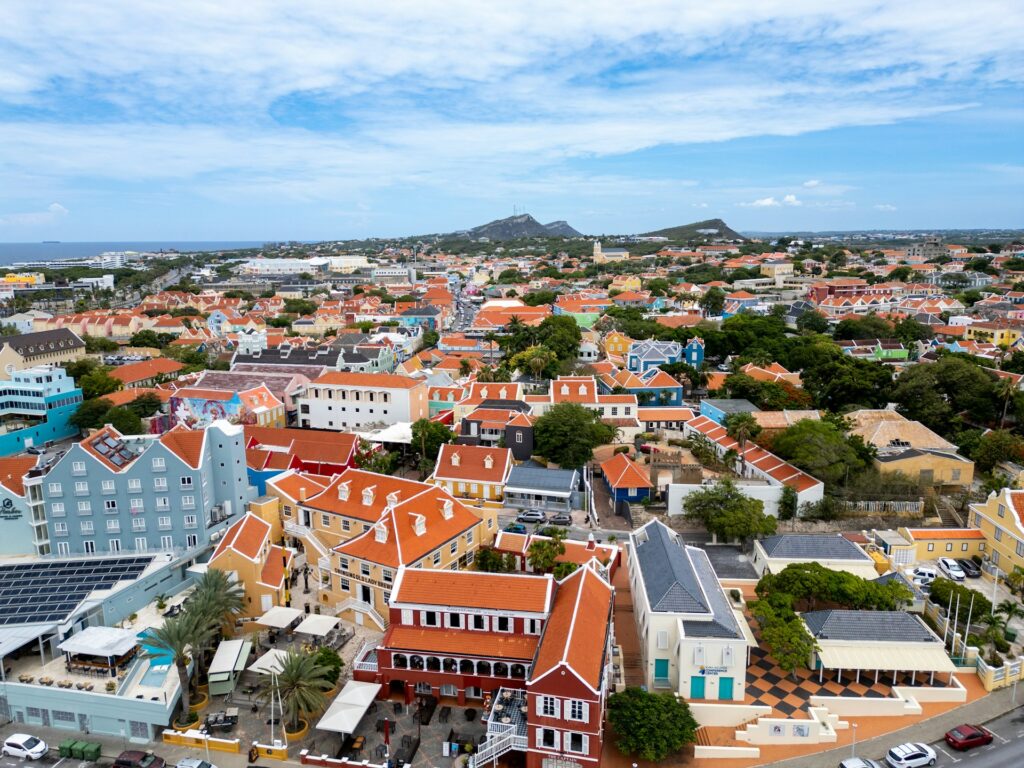
Living Like a Local:
- Explore the Historic City: Wander the colorful streets of Punda and Otrobanda, cross the iconic Queen Emma Bridge, and explore museums like the Kura Hulanda Museum, which sheds light on the island’s history with the slave trade.
- Beach Hopping and Diving: Drive to the west coast to find stunning cove beaches like Cas Abao and Kenepa Grandi, or dive into Curaçao’s vibrant coral reefs—some of the best in the Caribbean.
- Experience Local Flavors: Visit the Landhuis Chobolobo to discover how the famous Blue Curaçao liqueur is made, or dine at Plasa Bieu, a local market offering traditional Curaçaoan meals.
- Nature Exploration: Hike through Shete Boka National Park, where powerful waves crash against rugged volcanic coastlines, or scale Christoffel Mountain for breathtaking island views.
Practicalities for Expats:
Visas: US citizens can stay up to 180 days without a visa. Dutch and EU citizens benefit from easier immigration procedures. For long-term stays, a residence permit is required, typically necessitating a sponsor such as an employer.
Safety: Curaçao has relatively low crime rates, but petty theft does occur, especially in tourist areas. Violent crime is rare but has been reported in more isolated parts of the island. Basic safety precautions are recommended.
Healthcare: Curaçao offers high-quality healthcare with modern hospitals and skilled professionals. Expats typically opt for private health insurance to ensure comprehensive coverage.
The cost of living is higher than in more rustic Caribbean destinations, but this is a trade-off for the city’s developed infrastructure, stability, and vibrant, multicultural atmosphere. It’s not the place to escape to untouched beaches, but rather a destination to immerse yourself in a unique urban environment that feels like a tropical Amsterdam.
Read: Americans Live Like a Millionaires on $1,500 a Month in These 14 Incredible Countries
12. Bocas del Toro, Panamá
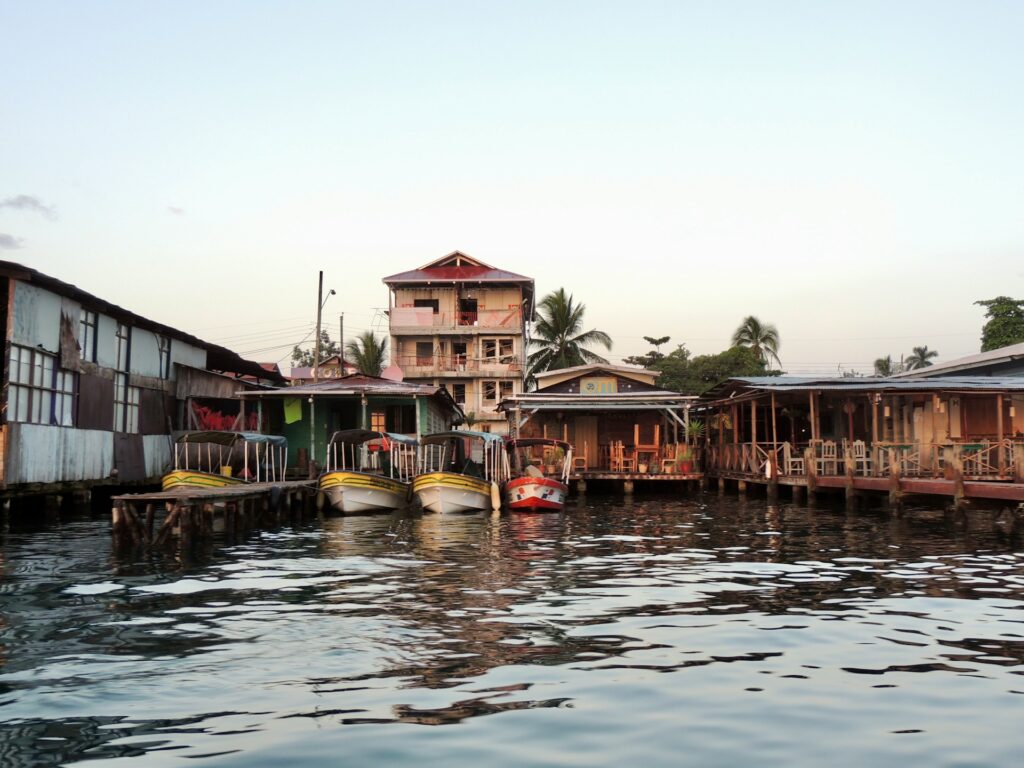
Bocas del Toro, located on Panama’s northwestern Caribbean coast, offers a laid-back, rustic vibe, attracting surfers, backpackers, and eco-tourists. Life here revolves around the water, with the main town of Bocas Town on Isla Colón featuring colorful wooden buildings perched on stilts.
The region operates via water taxis, connecting islands and beaches, and the area’s charm lies in its constant motion, whether it’s surfing world-class breaks, spotting dolphins, or hiking through jungle to find hidden beaches.
Monthly Budget Breakdown:
Housing ($450 – $800): Rent is affordable, with simple homes and one-bedroom apartments available from $550. Two-bedroom apartments range from $450 to $1,000, making it easy to stay on a tight budget.
Utilities ($75 – $150): Utilities are inexpensive, as many homes rely on sea breezes for cooling instead of AC. Expect to pay around $75-$150 for electricity, water, and internet.
Groceries ($300 – $400): A weekly grocery budget of $80-$100 is enough for a single person. Fresh seafood is abundant, and small markets offer essentials, though imported goods can be pricey.
Transportation ($100 – $150): There are few cars, and most travel is by walking, biking, or taking water taxis between islands. Water taxi rides can cost as little as $3, making this budget sufficient for frequent trips.
Dining & Entertainment ($200): The food scene in Bocas is surprisingly diverse and affordable, catering to expats and travelers. Casual meals are plentiful and reasonably priced.
Estimated Total: ~$1,125 – $1,700
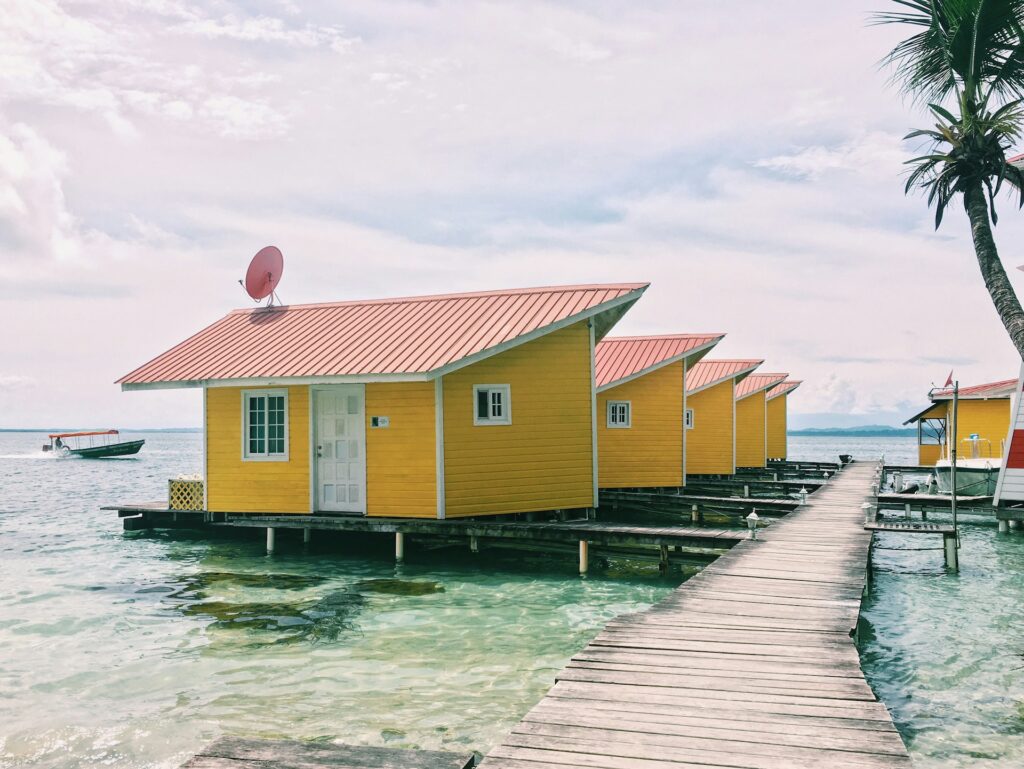
Living Like a Local:
- Island Hopping: Explore nearby islands like Isla Carenero, Isla Bastimentos, and the pristine Zapatilla Islands by water taxi.
- Surfing: Bocas is renowned for its surf breaks, offering options for all skill levels, from beginners to experts.
- Wildlife Spotting: Visit Dolphin Bay to see bottlenose dolphins or Starfish Beach to admire giant sea stars. Sloths are commonly spotted around the islands.
- Diving and Snorkeling: The clear waters around Bocas are perfect for diving and snorkeling, with vibrant coral reefs teeming with marine life.
- Jungle Exploration: Hike through the rainforest on Isla Bastimentos, explore Nivida Bat Cave, or relax at Red Frog Beach, home to the iconic red frogs.
Practicalities for Expats:
Visas: US, Canadian, and EU citizens can stay in Panama for up to 180 days without a visa. Panama’s Pensionado visa offers extensive benefits, requiring a lifetime pension of at least $1,000/month.
Safety: Bocas is generally safe, but petty theft can occur, especially in Bocas Town. Stay aware, particularly at night.
Infrastructure: The area’s rustic infrastructure is its biggest challenge. Expect occasional power outages and unreliable internet, especially on outer islands. The wet climate adds to the challenge, with higher rainfall than Panama’s Pacific coast.
Bocas del Toro offers the lowest cost of living in the Caribbean, but this comes with rustic conditions and minimal infrastructure. It’s not for those seeking high-tech amenities or air-conditioned malls, but perfect for those who crave adventure, a close-knit community, and a water-based, self-sufficient lifestyle in an unspoiled natural setting.
Finding Your Affordable Caribbean Paradise
Living in the Caribbean on a budget under $2,000 a month is not just a fantasy but a viable option in various destinations. However, making this a reality requires strategic choices, such as avoiding tourist hotspots, shopping locally, and adapting to the region’s infrastructure, be it cycling in Puerto Viejo or navigating Grenada’s minivan transport.
Ultimately, this guide is just a starting point. To fully understand a location, a “boots-on-the-ground” visit for one to three months is essential. This will give you a true sense of the local economy, lifestyle, and infrastructure.
Additionally, visa and residency processes can be tricky, so research is key. The Caribbean dream is achievable, if you’re informed and flexible.